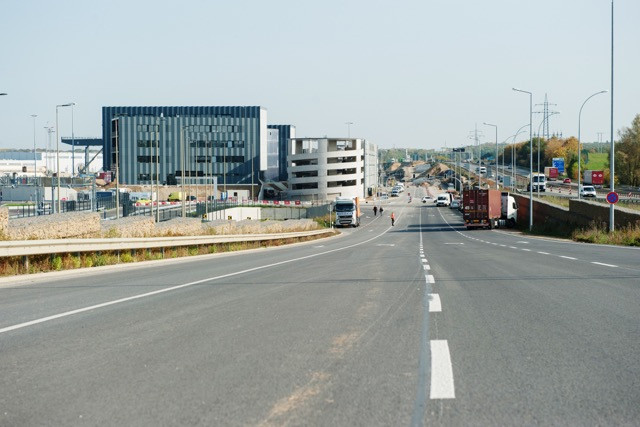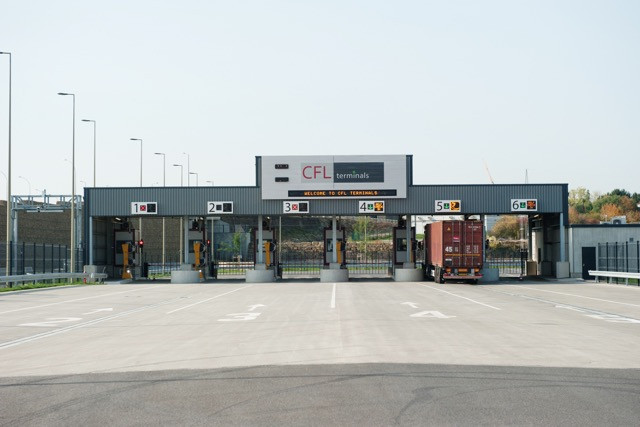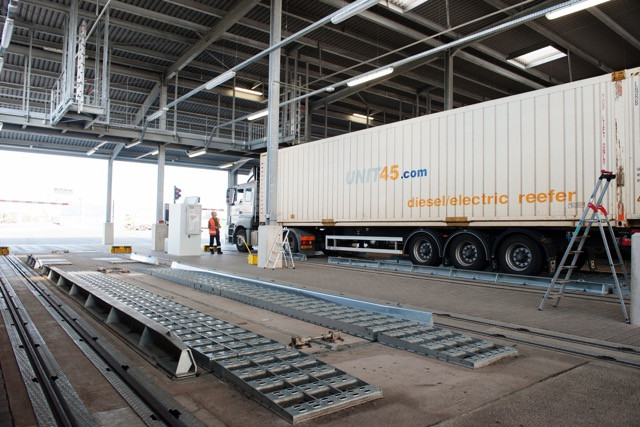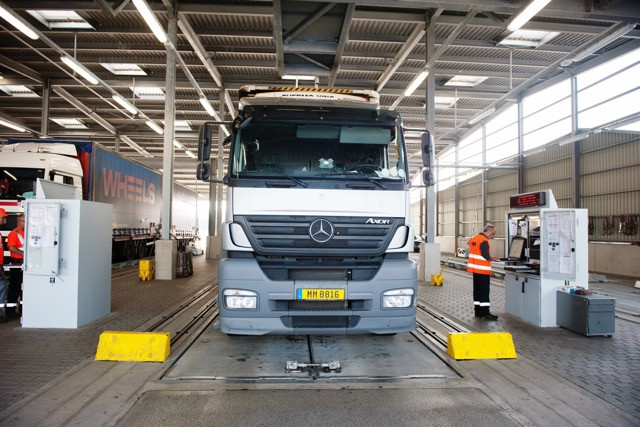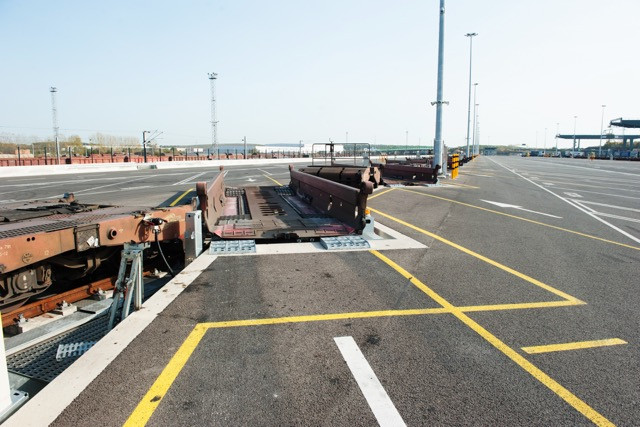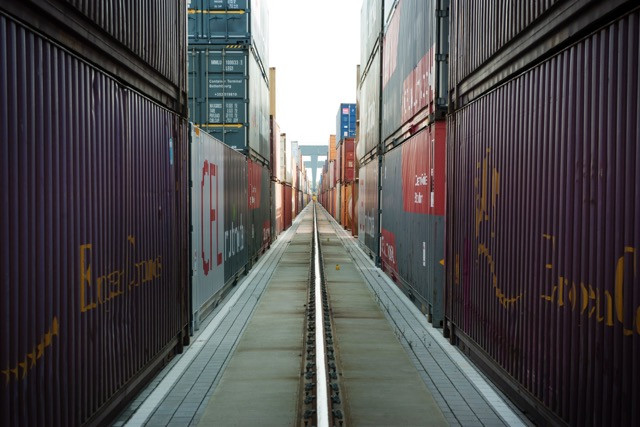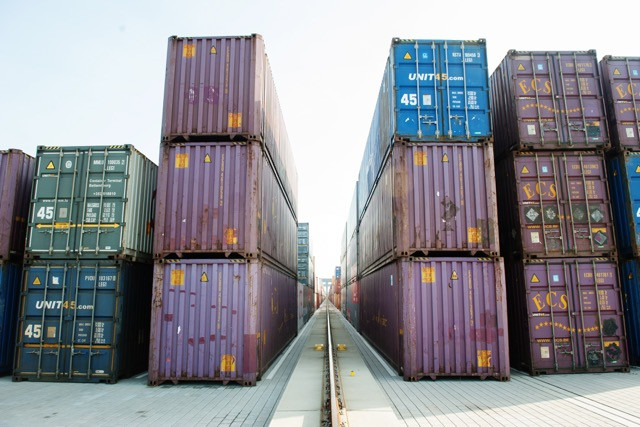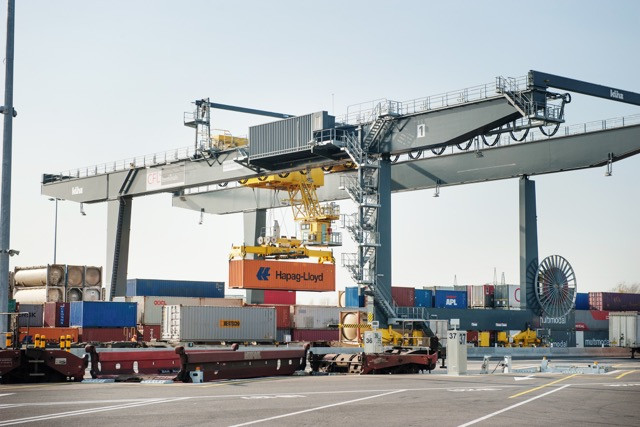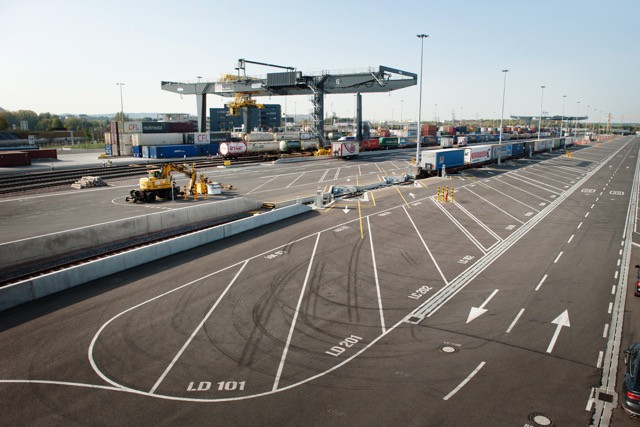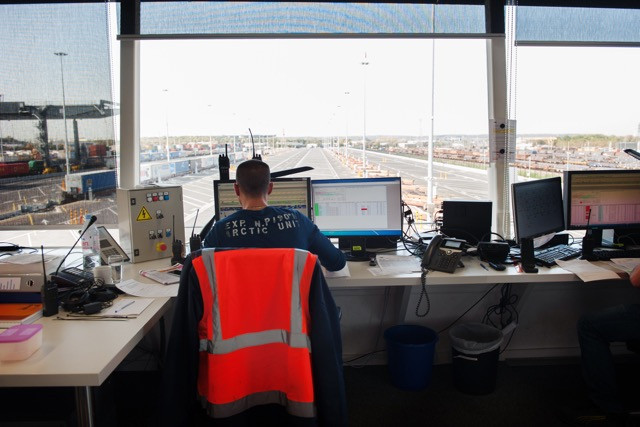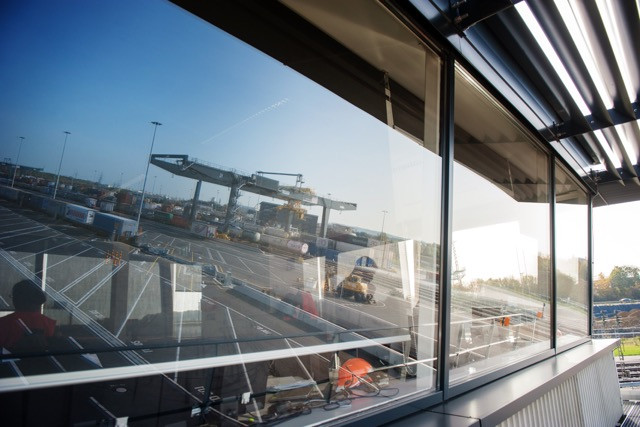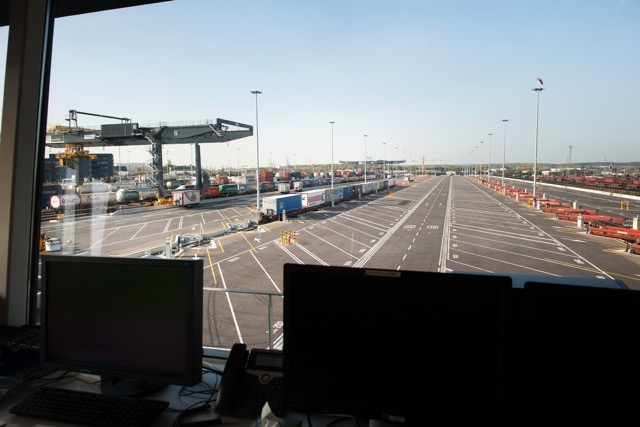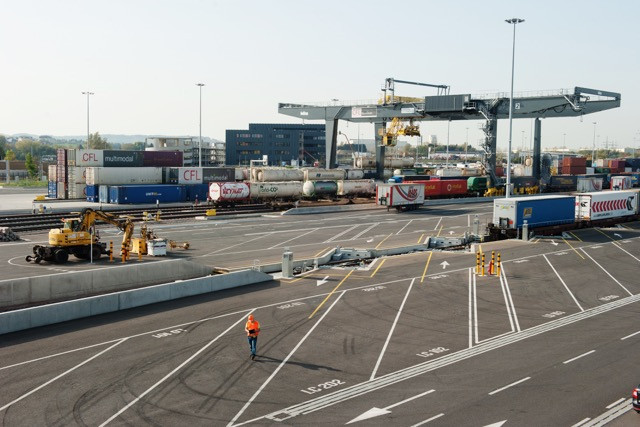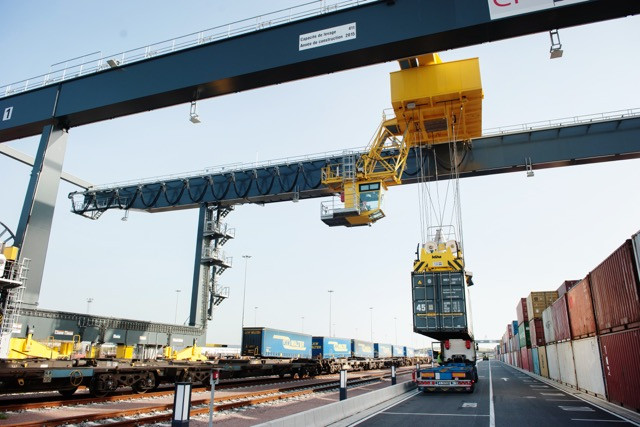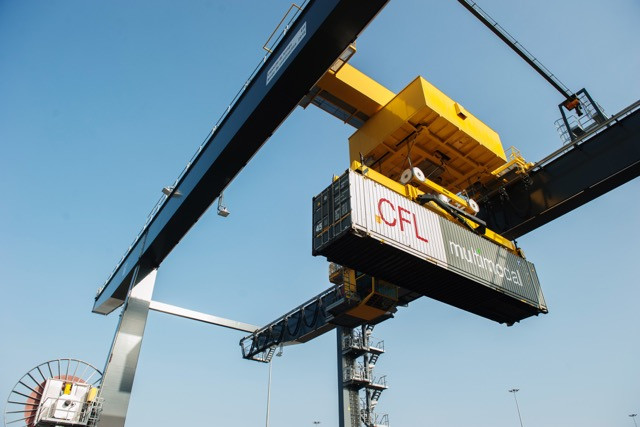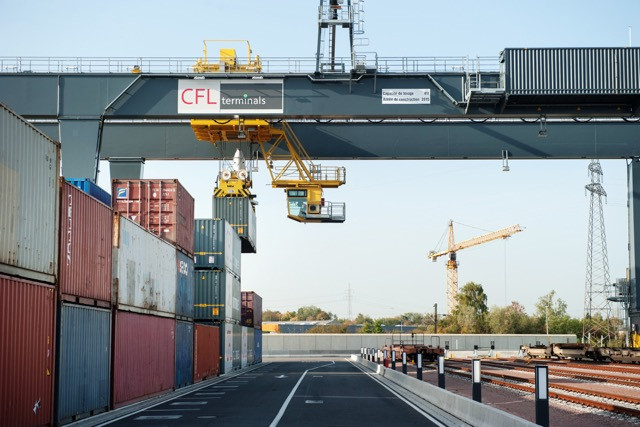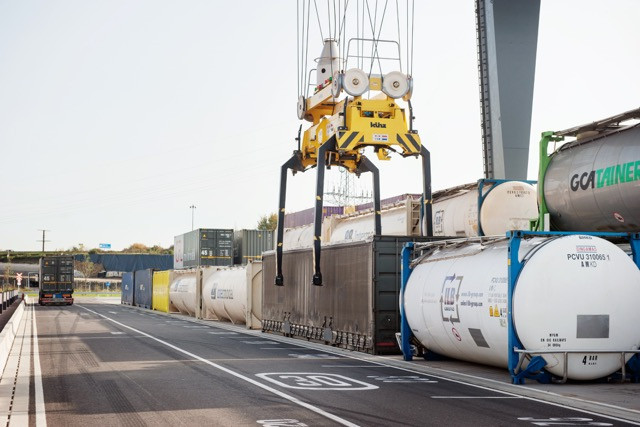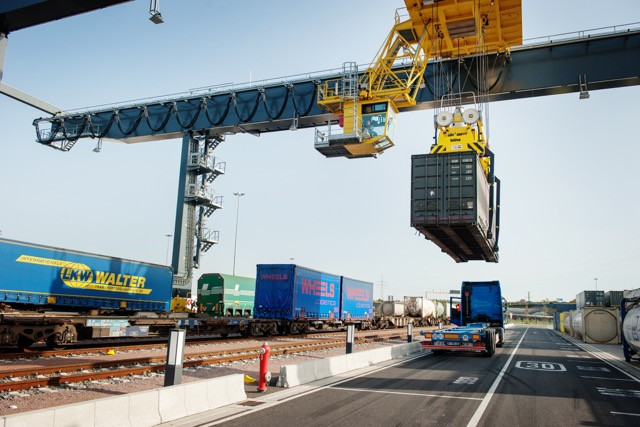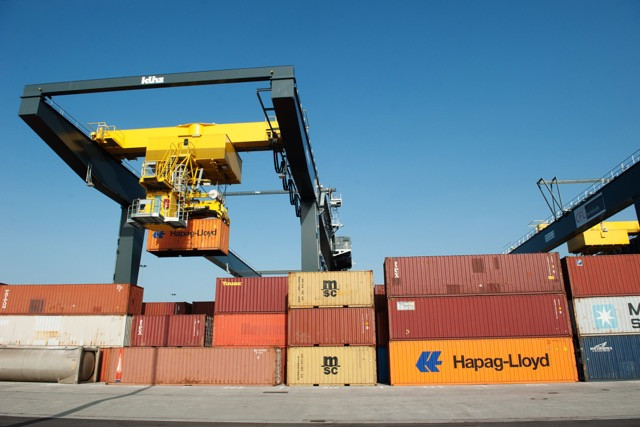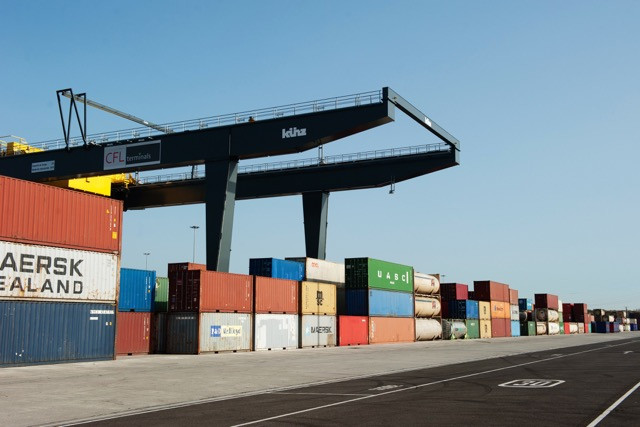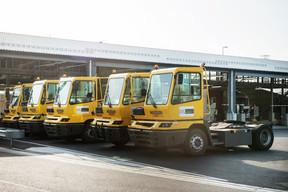“CFL terminals, a subsidiary of the CFL Multimodal, made a contract with the government to rent the whole terminal and run it,” site director Daniel Feyder told Delano during a visit to the 33-hectare site on 17 October. “As it is financed by the Luxembourg government, it’s a public terminal with public tariffs applicable to everyone,” he added.
Feyder, who was hired in 2008, is no newcomer to the industry, having previously managed a transport company for ten years prior to his appointment. He was actively involved in determining key features of the new terminal. “We went around and had a look at other terminals in Europe for best practices,” he said.
Checking in
During a tour of the site, he pointed out the high-tech verification procedures in place to reduce waiting times of lorry drivers. Ten smart cameras film each lorry entering the site from different angles, enabling the computer system to rapidly verify and identify them without the vehicles having to stop. Similar to self-service airport check-in terminals, drivers then stop at a barrier and key in their booking reference on a screen by their cab.
Information gathered from the photos mean the system knows which country a driver is from, so it can present commands in their respective languages. Drivers then move onto the “Gabarit” gate where they undergo a physical control.
“We have a look inside if it’s empty. But we don’t check what’s inside,” he said, adding this was the responsibility of the customs officers, which occasionally make spot checks. From here, drivers are issued with a site map and a place number which they must drive to for their cargo to be unloaded.
600 trucks per day
There was little traffic during our visit, which took place in the early afternoon. Feyder explained that peak times tended to be in the morning and between 5 and 6pm. But the site is open 24 hours a day, seven days a week so it is to be expected that the flow of traffic is spread out. Only four months after opening, it is still some way off the maximum capacity of 1,500, welcoming currently around 600 trucks per day.
Luxembourg’s rail logistics network means cargo can be moved by rail to Spain, Italy, Turkey, the UK, Scandinavian countries and, since May this year, Britanniadock in Zeebrugge in Belgium and Champigneules in France. Further down the line, there is also a project to open a connection to China. “Every modern terminal in Europe is starting to get connected to China somehow, so we are too. We’re in discussions with some Chinese companies to start up a train to China. It will take some time,” Feyder said.
Included in the construction of the new site, between the A13 and the cargo warehouse, are a special truck access to the motorway and a new administrative building accommodating over 300 staff working for various elements of the CFL Multimodal group on a single site for the first time. The old site, meanwhile, is being converted into a secure truck stop, offering sanitation and other infrastructure for truck drivers to stay overnight.
